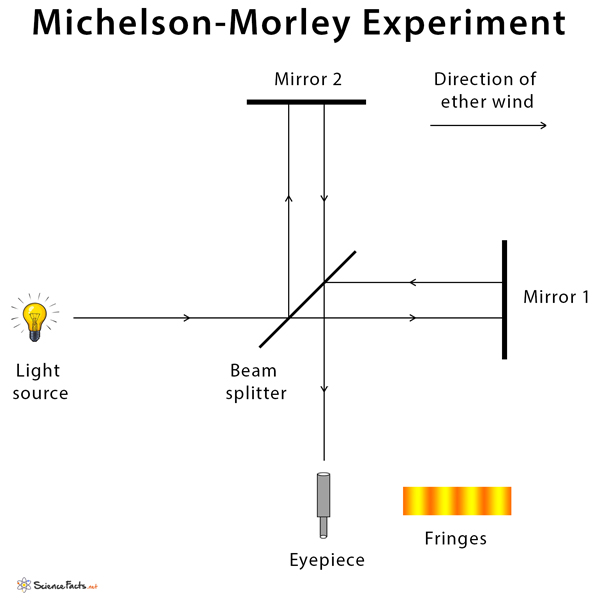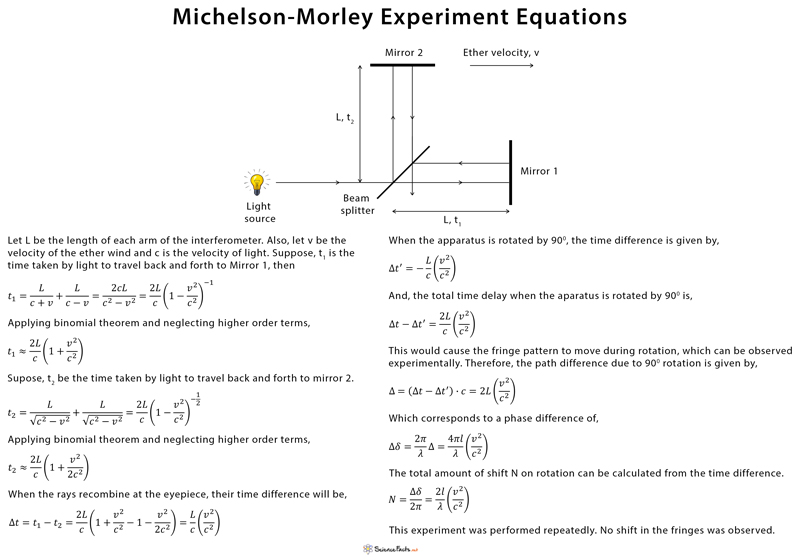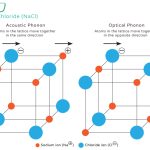Michelson-Morley Experiment
What is Michelson-Morley Experiment?
About 150 years ago, physicists believed that light waves require a medium to pass through. The Michelson-Morley experiment was performed by American scientists Albert Michelson and Edward Morley between April and July 1887. The purpose of this experiment is to prove the existence of ether. This hypothetical medium permeating space was thought to be the carrier of light waves. This experiment aimed to measure the speed of light in two perpendicular directions relative to the ether. The result was negative. Michelson and Morley did not find any significant difference between the speed of light in the direction of the presumed ether and the speed at right angles.
Experimental Arrangement of Michelson-Morley Experiment
To the effect of ether on the speed of light, Michelson designed a device now known as an interferometer. It is a sensitive optical device that compares the optical path lengths for light moving in two mutually perpendicular directions and utilized the interference of light waves to perform measurements of incredible accuracy. It sent a beam of light from a single source through a half-silvered mirror (beam splitter) that split it into two beams traveling perpendicular to each other. After departing the splitter, the beams traveled out to the long arms of the interferometer, where they were reflected in the middle by two small mirrors. Then, they recombined on the far side of the splitter, producing a pattern of constructive and destructive interference. The pattern of fringes, as observed by an eyepiece, is based on the length of the arms. Any slight change in the length would alter the amount of time the beams spent in transit. This change would then be observed as a shift in the positions of the interference fringes.
Conclusion of Michelson-Morley Experiment
Michelson and Morley measured the speed of light by observing the interference fringes produced by the two beams. They expected that the light would travel faster along an arm if oriented in the same direction as the ether was moving, and slower if oriented in the opposite direction. Since the two arms were perpendicular, there is only one way that light would travel at the same speed in both arms and arrive simultaneously at the eyepiece. It was possible if the instrument were motionless to the ether. If this were not the case, the crests and troughs of the light waves in the two arms would arrive and interfere slightly out of synchronization, thus reducing the intensity. Although Michelson and Morley expected different speeds of light in each direction, they found no noticeable shift in the fringes. Otherwise, that would indicate a different speed in any orientation or at any position of the Earth in its orbit. This null result seriously discredited existing ether theories. Eventually, it led to the proposal by Albert Einstein in 1905 that the speed of light is a universal constant.
Article was last reviewed on Saturday, May 9, 2020









If the above experiment (as well as Airy’s Failure) did not detect the earth’s movement, how come Focault’s pendulum does?
Can’t prove truth via lies.